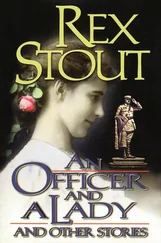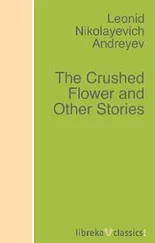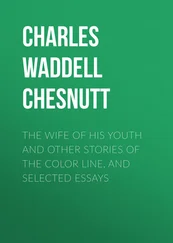“Matters ran on pretty well for the first two years…” — Kendall, p. 185.
“No Mexican has such warm feelings for his country and its progress as I.” — Charles Allen Smart, Viva Juárez: A Biography (New York: J. B. Lippincott, 1963), p. 357 (said in 1865).
Ten-year serfdom for negroes— Ridley calls this “particularly ironic” (p. 216) since Maximilian had just abolished peonage. The new decree was for the convenience of ex-Confederate colonists.
“We see nothing to respect in this country…” — Haslip, p. 268.
“If necessary, I can lead an army…” — Ibid., p. 302.
Details of Maximilian’s last days and execution— Ridley, pp. 262–77, Haslip, pp. 484–98.
“I am here because I would not listen to this woman’s advice” and Maximilian’s reply— Slightly reworded from Haslip, p. 494.
Curtopassi scissoring away his signature— Thus Haslip. According to Ridley (p. 265), it was Lago.
Descriptions of retablos— After text and illustrations in Elizabeth Netto Calil Zarur and Charles Muir Lovell, eds., Art and Faith in Mexico: The Nineteenth-Century Retablo Tradition (Albuquerque: University of New Mexico Press, 2001). The votive caption in my text is invented.
Description of the Holy Child of Atocha— After two illustrations in Zarur and Lovell, pp. 108–9.
“in France it was no longer permissible to be mistaken.” — Haslip, p. 196.
The reality of Princess Salm-Salm’s seduction attempt, which is reported in several biographies of the Emperor, does not convince Ridley, who asserts (pp. 266–67) that it “sounds like the gossip of an officers’ mess.”
The various discontents of Charlotte— Haslip proposes (p. 127) that “Maximilian, who was neither very virile nor highly sexed and who was only attracted by the novel and exotic, found that with Charlotte he could no longer function as a man.”
“You must stay here for the night…”— Haslip, p. 487.
The gardener’s daughter in Cuernevaca— Ridley, p. 171. According to Haslip, she was the gardener’s wife. Concepción Sedano is said to have given birth to Maximilian’s son in August 1866 and died “of grief” the following year. The son might have been a man who was shot as a spy in France during World War I.
The slave-girls of Smyrna— Ridley, p. 50.
Reading material of Miramón and Maximilian— Ridley, pp. 270–71.
First dream: Description of Maximilian’s embalmed corpse— After an illustration in Gilbert M. Joseph and Timothy J. Henderson, eds., The Mexico Reader: History, Culture, Politics (Durham, NC: Duke University Press, 2002), p. 268 (letter from Empress Carlota to Empress Eugénie, 1867).
Details of Maximilian’s postmortem journey: The Novara, the hearse in Trieste; the marble tomb in Vienna— Gene Smith, Maximilian and Carlota: A Tale of Romance and Tragedy (New York: William Morrow, 1973), pp. 284–85.
“Anything is better than to sit contemplating the sea at Miramar…”— Haslip, p. 361.
“Just as when upon first penetrating the Brazilian jungle he nearly shouted for joy…”— This sentence is grounded in the following haunting words of Maximilian’s, which do indeed refer to the Brazilian jungle (1860): “It was the moment when all we have read in books becomes imbued with life, when the rare insects and butterflies contained in our limited and laboriously formed collections suddenly take wing, when the pygmy growth of our confined glasshouses expand into giant plants and forests…. the moment in which the book gains life — the dream reality” (quoted in Haslip, p. 130).
Maximilian’s order for two thousand nightingales— Haslip, p. 361.
Second dream (based on the sacrificial incarnation of Tezatlipoca, whose name is also transliterated Teczatlipoca)— J. Eric Thompson, in charge of Central and South American Archaeology, Field Museum, Chicago, Mexico Before Cortez: An Account of the Daily Life, Religion, and Ritual of the Aztecs and Kindred Peoples (New York: Scribner’s, 1937), pp. 205–210. The victim was chosen from a pool of idle young men who were kept on reserve for the purpose. His enjoyments lasted for a year; he was not unlike one of our American range cattle, who wander freely under the sky, grazing and copulating until they pay our price (which at least spares them old age). Tezatlipoca’s four wives were Flower Goddess, Maize Goddess, Water [Goddess?] and Salt Goddess. On p. 212 the author remarks: “This ceremony signified that those who had had riches and pleasures during their life would in the end come to poverty and pain.”
Description of the quetzal-feather headdress— After an illustration in Brian M. Fagan, Kingdoms of Gold, Kingdoms of Jade: The Americas Before Columbus (New York: Thames and Hudson, 1991), p. 12.
“amidst cool night winds”— One meaning of “Tezatlipoca” was “night wind.” Another was “youth.” He was “associated with human rulership,” all three of these details according to Joseph and Henderson, pp. 75–76 (Inga Clendinnen, “The Cost of Courage in Aztec Society”).
The obsidian mirror— This was another reified meaning of the name Tezatlipoca, who represented war, darkness and masculinity. The surrogate’s death facilitated the potency of other men. Zarur and Lovell, p. 104.
Description of the sacrificial stone basin— After an illustration in Fagan, p. 21.
“Never complain, for it is a sign of weakness.” — Ridley, p. 48 (one of Maximilian’s twenty-seven principles).
“God bless the Emperor!” — Haslip, p. 498.
Carlota: “One sees red…”— Smith, p. 291. [Ellipsis in original between “gay.” and “The frontier.”]
The incarnation of Teteoinan— Details from Thompson, p. 186.
The incarnation of Ilamatecuhtli— Ibid., p. 191.
“Well, you have your butterflies… the age of seventy.”— Altered and expanded from Haslip, p. 160.
THE CEMETERY OF THE WORLD
Epigraph: “Woe is me, Llorona!…” — Margit Frenk et al., comp. & ed., El Colegio de México, Cancionero Folklórico de México, tomo 2: Coplas del Amor Desdichado y Otras Coplas de Amor, p. 122 (3646, “La Llorona,” trans. by WTV).
The two possible origins of the plague— I have invented both of these. However, my description of the old volumes in the Archives of the Ayumiento de Veracruz (from which, thanks to translations by Teresa McFarland, I did garner a few rhetorical flourishes, together with the fact of the conversion of the municipal slaughterhouse into a barracks in 1648) is based on examination of them in January 2011, and in particular on the following: (1) Año 1608–1699, caja 01, vol. 1. (2) Caja 3, año de 1804; libro n 98 tomo 5. [As you can see, the cataloguing is inconsistent.]
Founding of Villarica, and the date of its removal to Veracruz; situation of the garrison, and a couple of other such details— Two Hearts, One Soul: The Correspondence of the Condesa de Galve, 1688–96, ed. & trans. Meredith D. Dodge and Rick Hendricks (Albuquerque: University of New Mexico Press, 1993), p. 159n. In this place we are told that “lack of city walls made the [new] settlement vulnerable to strong north winds,” but in Veracruz I was informed that the city was “the cemetery of the world” for at least two centuries in part because of the fetor within its walls, so for this story I chose to follow local knowledge, or legend, and mention walls. Veracruz may or may not have been erected directly over an Indian town. A conquistador who was there locates it “a mile and a half from this fortress-like place called Quiahuitzlan” (Bernal Díaz [del Castillo], The Conquest of New Spain, trans. J. M. Cohen [New York: Penguin, 1963], p. 114).
Читать дальше












